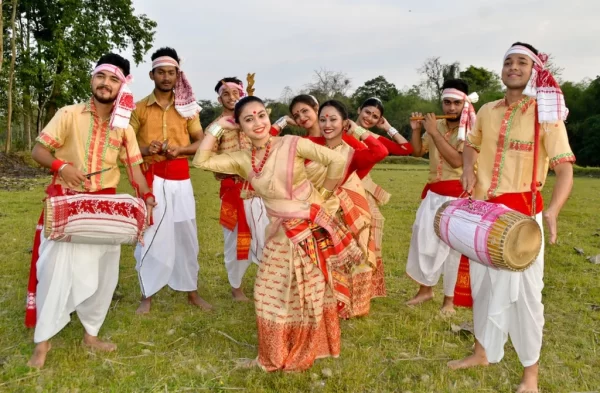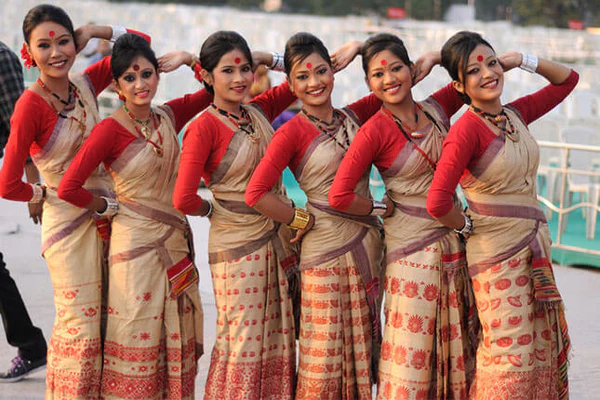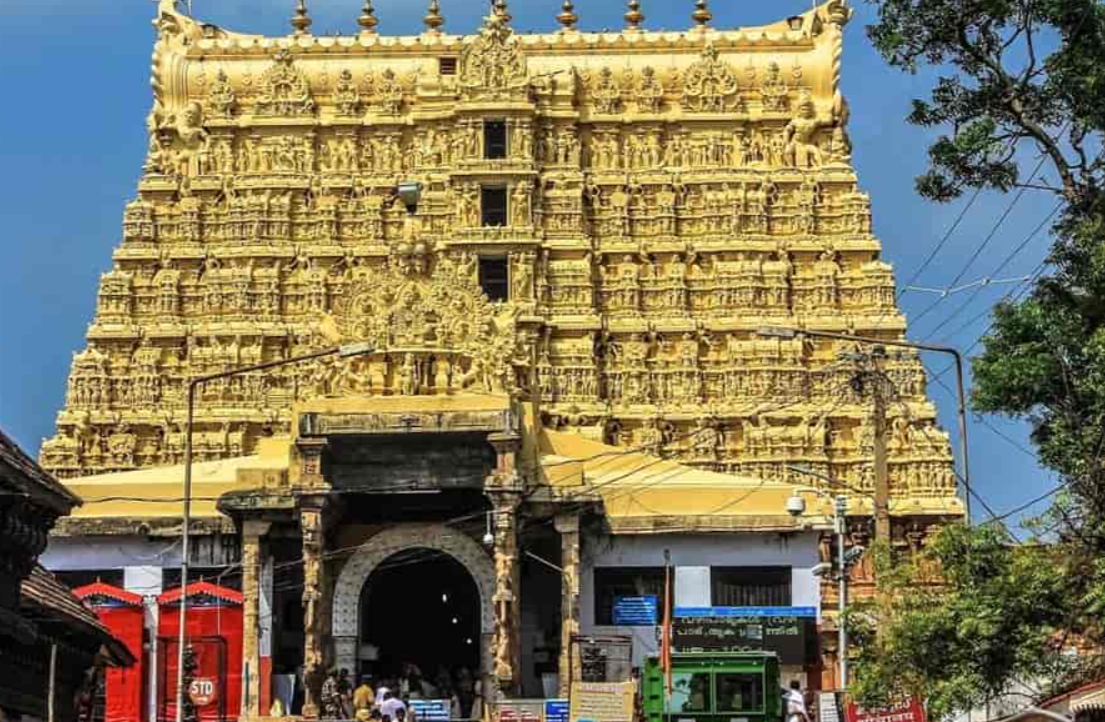In the northeastern region of India lies Assam, a state renowned for its rich diversity and cultural beauty. The Traditional Dress of Assam is a vivid reflection of this cultural richness and the strong respect its people have for their heritage. For generations, the people of Assam have preserved their traditions, and their traditional clothing vividly showcases this cultural legacy. From the elegant Mekhela Chador to the versatile Gamocha, each garment has its unique story and significance. Let’s explore how these traditional dresses contribute to Assam’s cultural tapestry.
Traditional Dress of Assam for Men

Men’s traditional attire in Assam is a blend of simplicity, style, and practicality, deeply rooted in the region’s cultural heritage. The following are key elements of traditional Assamese men’s clothing:
Dhoti
The Dhoti is a quintessential piece of clothing for Assamese men. This traditional garment consists of a long rectangular piece of cloth wrapped around the waist and legs, providing comfort and flexibility in Assam’s humid climate. The Dhoti, often made of cotton, comes in various colors and designs, reflecting the cultural diversity of the region. Whether simple or elaborately patterned, the Dhoti is a symbol of Assamese identity and tradition, worn with a shirt or kurta to enhance its elegance.
Kurta
The Kurta represents sophistication and cultural pride in Assamese men’s fashion. Crafted from luxurious cotton or silk fabrics, the Kurta is characterized by its long tunic shape and ornate embroidery around the collar, cuffs, and front placket. The intricate designs of the Kurta highlight Assamese craftsmanship and allow men to express their style, whether for formal events or casual gatherings.
Gamocha
The Gamocha is an essential piece of Assamese clothing, symbolizing tradition and versatility. This rectangular cotton cloth, adorned with intricate patterns, serves multiple purposes – from a towel to a scarf or headgear. The Gamocha is not only practical but also holds significant cultural value, representing respect, compassion, and community spirit in Assamese culture. It plays a vital role in both daily life and festive celebrations.
Jorhat Topi
The Jorhat Topi is a traditional conical hat made from bamboo and cane, meticulously crafted by Assamese artisans. The hat is often decorated with colorful threads and jewels, reflecting regional artistry. Worn during important festivals and cultural events, the Jorhat Topi adds a touch of heritage and beauty to traditional attire, symbolizing Assam’s rich cultural legacy.
Traditional Dress of Assam for Women

The traditional clothing of Assamese women is a beautiful expression of the region’s culture and artistic heritage. The following are notable elements of women’s traditional attire:
Mekhela Chador
The Mekhela Chador is a classic and elegant ensemble that epitomizes Assamese femininity. This traditional outfit consists of a Mekhela, a flowing skirt, and a Chador, a draped piece of cloth covering the upper body. Typically made from silk or cotton, the Mekhela Chador is adorned with intricate designs and borders that reflect Assam’s artistic traditions and cultural motifs.
Riha
The Riha is a traditional blouse worn by Assamese women, complementing the Mekhela Chador. Crafted from silk or cotton, the Riha features detailed embroidery on the neckline, sleeves, and hem. Its designs range from simple to ornate, showcasing Assamese craftsmanship and adding grace to the traditional attire. The Riha enhances the visual appeal of the Mekhela Chador, making it a timeless choice for various occasions.
Assam Silk Saree
The Assam Silk Saree is a cherished garment that embodies tradition and elegance. Made from high-quality Assam silk, known for its lustrous texture and vibrant colors, this saree is ideal for special occasions. The exquisite craftsmanship and intricate patterns, including paisleys, flowers, and birds, celebrate Assam’s rich textile heritage and the skills of its artisans.
Japi
The Japi is a traditional headgear made from bamboo and cane, often worn by Assamese women during festivals and cultural events. This conical hat, adorned with colorful threads and decorations, represents Assamese craftsmanship and cultural pride. The Japi not only enhances the festive attire but also symbolizes unity, celebration, and a deep connection to Assamese traditions.
Conclusion
The Traditional Dress of Assam serves as a vibrant testament to the state’s cultural and historical richness. Each piece of clothing, from the Dhoti and Kurta to the Mekhela Chador and Assam Silk Saree, reflects the intricate beauty and significance of Assamese traditions. These garments are more than just clothing; they are living symbols of Assam’s heritage, preserving and celebrating the region’s customs for future generations. Through these traditional dresses, the essence of Assamese culture is beautifully showcased and perpetuated.



